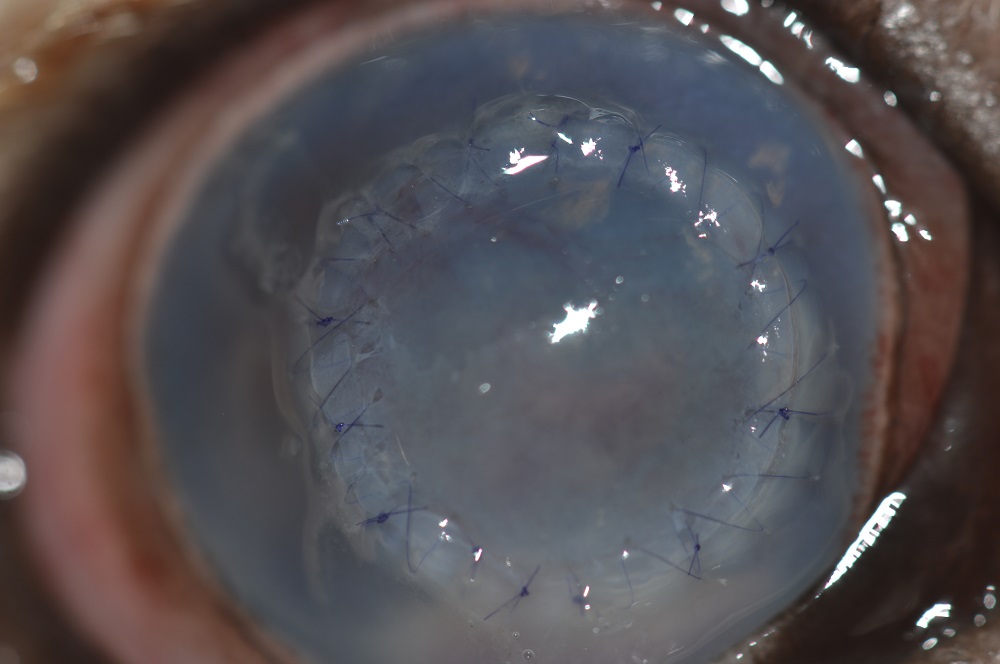The Value of Corneal Donations
Clinical Connections – Autumn 2018
We deal with a large number of eye conditions amongst many different species. Brachycephalic dogs are our most frequently seen patients, while rabbits and rodents among the least common. Corneal ulcers are one of the most common eye conditions that our team sees.
Corneal ulcers can be treated with medical management or surgery. Surgical repair of a corneal ulcer is usually indicated in cases of the more severe cases (deep or full-thickness ulcers or infected ulcers). Scarring after surgery is one of the biggest problems with regards to regaining vision for patients.
Deep corneal ulceration can lead to perforation of the eye and this in turn may lead to loss of sight, or even loss of the eye if the damage is very severe. There are many different described surgical techniques and several materials that can be used to reconstruct the cornea. However they have varying success at regaining a good visual outcome with corneal clarity.
The cornea must remain relatively dehydrated, with minimal blood vessels or pigmentation, for it to be clear and transparent. If the cornea is not transparent, then vision is compromised. With any corneal injury or surgery there will be some scarring and this may affect vision, so the goal of any procedure is to minimise this.
Most of us are aware that as humans we can opt into an organ donation programme. If the worst were to happen to you or one of your loved ones, then the option for giving their organs to help another is there. What many people don’t know is that this is true for man’s best friends too! Owners of companion animals can opt to save the sight of an animal in the future and our pet corneal donation bank facilitates that.
Corneal tissue is ideal for deep and penetrating corneal injury repairs because it is tough and allows for transparency to be regained after surgery.

Donated eyes are kept for 24h at 4 degrees Celsius and then frozen. The corneal tissues is used principally for corneal repair of deep corneal ulcers or perforations in any patient. This is done by performing a penetrating or non-penetrating keratoplasty, where the donor cornea is sutured into the defect in the recipient’s cornea. The eyes are also used for reconstruction of the globe after excision of limbal neoplasms (such as melanocytomas).
The corneal bank is only able to exist due to the generosity of owners, who donate their pets’ eyes to us. It is such a difficult time but some owners feel grateful of the chance to help other animals regain their sight. We are extremely appreciative to all those who have supported the programme in the few years it has been running. This support enables us to make a big difference in what we can offer our patients.
It would be great if we could spread the word regarding canine corneal donation! Please do not hesitate to contact us if you have any clients that would like further information regarding the donor programme.
